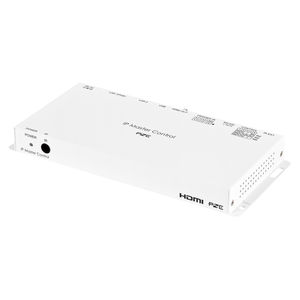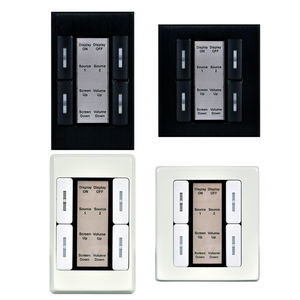
- Laboratory
- Laboratory infrastructure
- Operating room control unit
- Cypress Technology Co., Ltd.
- Company
- Products
- Catalogs
- News & Trends
- Exhibitions
Medical control system CDPS-CS7-S-Wmonitoringlaboratoryoperating room
Add to favorites
Compare this product
Characteristics
- Applications
- medical, monitoring, laboratory, operating room
Description
.Manages and configures multiple compatible VoIP extenders through a single WebGUI
.Defines display groups
.WebGUI displays status of connected Transmitters and Receivers, including IP address, channel selection, etc.
.HDMI output shows WebGUI and system status
.Dual LAN ports for controlling VoIP installations on separate networks
.Supports optional USB mouse and keyboard for local WebGUI control
.Optional Power over Ethernet (PoE) support for direct power supply
.Optional Trigger Control Keypad for easy preset activation.
This controller efficiently manages multiple VoIP extenders within the same network. By installing the unit on the local network, users can easily define and configure channel routing selections using the WebGUI. Customized groups and presets enable seamless control over multiple video zones. Without this controller, individual Transmitter and Receiver pairs would be limited to basic point-to-point operation.
Moreover, this unit supports controlling the matrix, video wall, and multiviewer modes of connected VoIP units. The WebGUI clearly displays settings of all connected Transmitter/Receiver units, including IP address, netmask, and extender status. Accessing the WebGUI is straightforward, either through a web browser over a regular network connection or by directly connecting an HDMI display, USB keyboard, and mouse to the unit. To enhance convenience, a trigger input interface is provided for integrating a remote control keypad or other trigger-supported products. This interface enables users to activate stored presets with a simple button press. Standard control options include WebGUI (remote or local), RS-232, Telnet, IR Remote, and triggers.
Catalogs
No catalogs are available for this product.
See all of Cypress Technology Co., Ltd.‘s catalogsOther Cypress Technology Co., Ltd. products
Medical Control System
*Prices are pre-tax. They exclude delivery charges and customs duties and do not include additional charges for installation or activation options. Prices are indicative only and may vary by country, with changes to the cost of raw materials and exchange rates.




